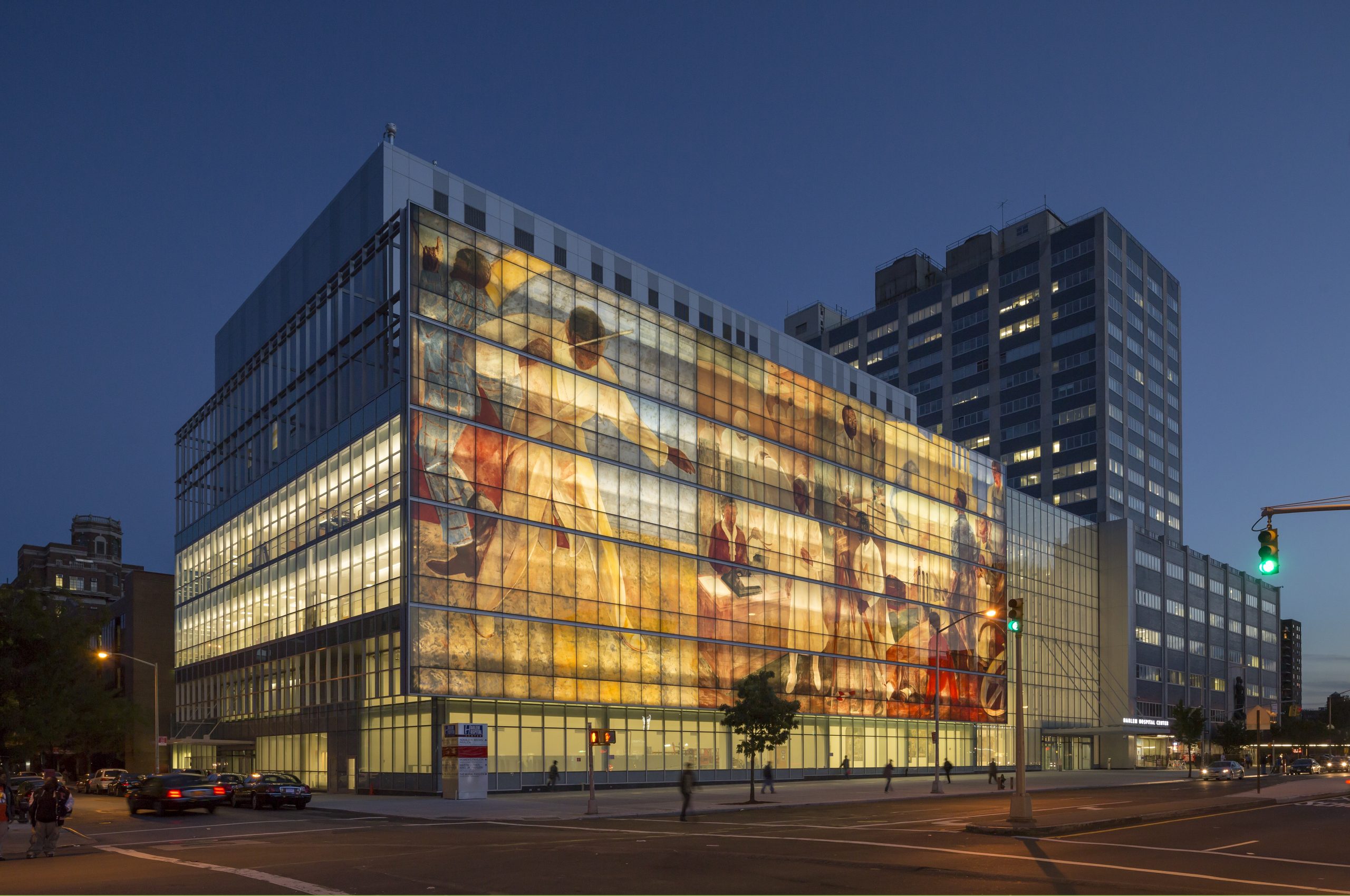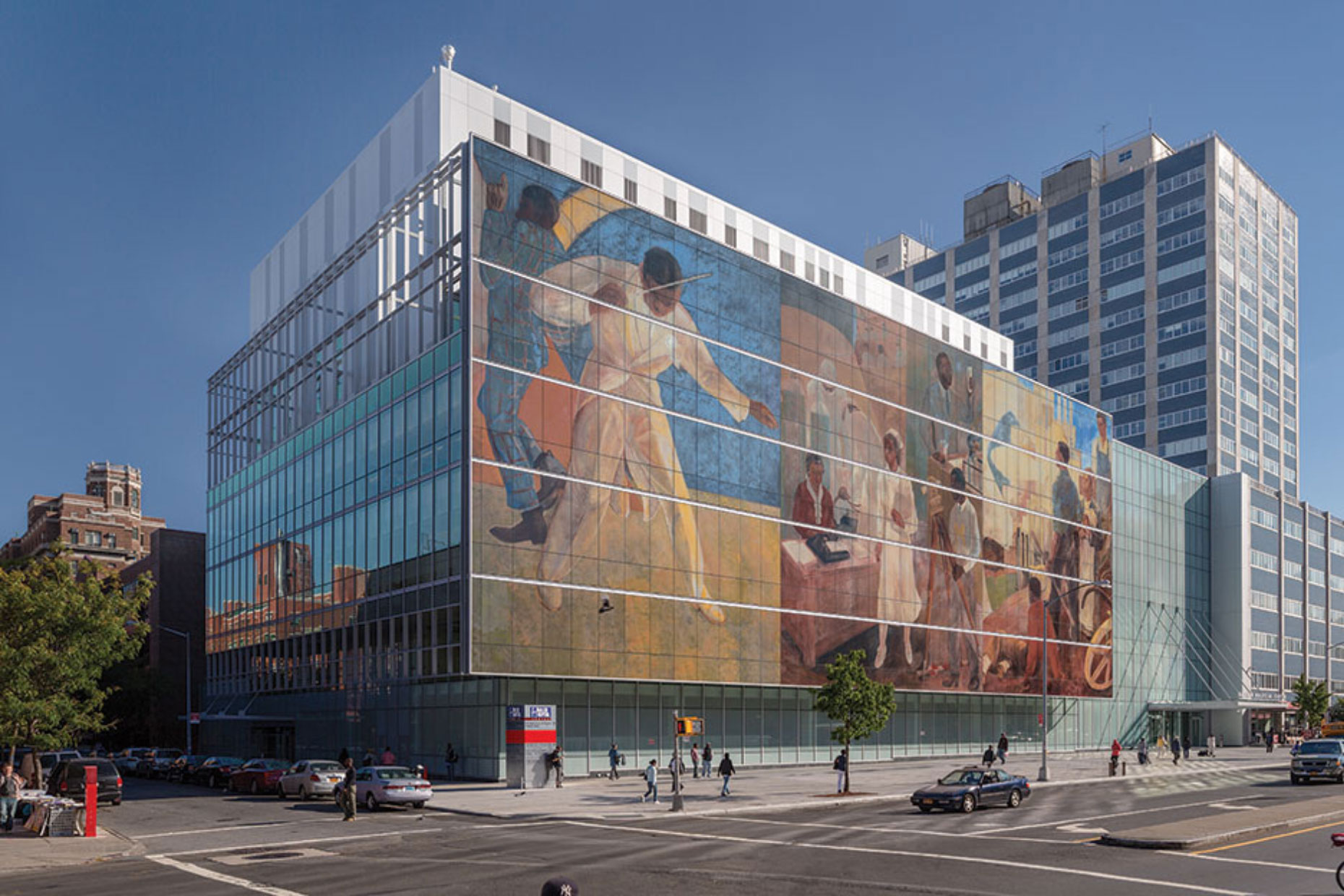

Client: NYC Health and Hospitals
Location: New York, NY, United States
Completion date: 2010
Project Team
Architecture + Interiors
Architect
HOK
Glazing Contractor
Glazing Contractor
W & W Glass Systems
Project Lead Manager
Muhammad Arif
General Glass International (GGI)
Overview
The Harlem Hospital Center facade showcases 429 completely unique, low-e laminated, insulated, digitally printed pieces of glass that come together in one 13,000 SF modern masterpiece that pays homage to historic murals. Careful testing and control of opacity levels with the Alice® digital printing system control light levels to maintain privacy while creating a spectacular glow, both inside and out.
Goals
The key to HOK’s winning the competition to redesign the Harlem Hospital was a single, brilliant idea: “We wanted to create a front façade that was an all glass curtain wall enlivened with a series of historic murals describing the migration story of African Americans coming to the United States, from slavery through the Harlem Renaissance,” notes Christopher Korsh, Principal in Healthcare for HOK. The only problem was that HOK was unsure how their concept would best come alive in the real world. While architects and designers are notorious for coming up with ideas that break boundaries — and sometimes budgets — this concept was not just audacious, it was enormous: 200 feet long and 60 feet high, to be exact. “We had preliminary ideas about how to make this happen,” explains Korsh, “but we had to begin research on how to get a full color image as part of a curtain wall. We looked at a number of different technologies, but some were beyond the budget parameters and others gave us worries about longevity and quality.”
Process
Only it wasn’t quite that simple. The first task was creating the artwork itself. “There were a series of WPA-era murals from famous African-American artists throughout the building, but in odd places, like stairwells,” Korsh explains. “We decided these were important artifacts that should be preserved and installed in a ground floor gallery space to help connect the building to the community.” In addition, HOK did high-resolution digital photography of the murals, and then selected several vignettes that would be enlarged many times and reproduced on the glass curtain wall.
Additional Information
“There were a lot of issues,” notes Balik. “This is a corridor, with people passing through looking out onto the street scene. So HOK had three primary objectives: it had to look good in daylight from outside, look good in daylight from inside, and look good at night from inside and outside. To make it work, we had to constantly assess opacity, ink, consistency between panels, registration, framing, the budget.…” Korsh describes it as a “herculean task” that has taken almost a year of close collaboration to create 429 individually printed panes of glass that will come together to create a seamless experience of art, history, community, and aspiration. “The effect will be special,” muses Korsh. “In the evening, the wall will glow like a beacon, as interior light shines through the semi opaque images on glass. During the day, you can see the art from the inside and it will create a stained glass effect.” But what Korsh perhaps likes best is what Alice portends for the future. “This technology is so flexible, the options are limitless. We want our buildings to communicate to their communities what they are all about. Alice gives us a whole new way to do this, as literally or figuratively as we want. The sky’s the limit.”